Paulo Dybala is the name on everyone’s lips in Turin right now, with the Argentine forward’s proposed move to Manchester United, and then Tottenham Hotspur, having broken down. He will now either remain at Juventus with limited opportunities or hope a non-English team comes in for him after Thursday’s transfer deadline for Premier League clubs. This tactical analysis scout report will look at what Dybala could have added to United but also why there seems an obvious role he could play at Juventus based on Maurizio Sarri’s tactics at Napoli.
Tactical analysis: Paulo Dybala’s style of play
Paulo Dybala is well-known to everyone reading this. He is one of the best forwards on the planet and a player that would add quality to every club in Europe. In his four seasons at Juventus, Dybala has won four Serie A titles, three Coppa Italia titles and reached the 2017 Champions League final. On the way to that final, Dybala excelled against Barcelona in the quarter-finals when scoring twice in the home leg. After scoring 19 goals and adding nine assists in his first season in Turin, Dybala scored eleven and assisted eight in his second before enjoying a spectacular 2017/18 season that saw him net 22 league goals while also making five assists. After being the attacking fulcrum at the team for three seasons, the arrival of Cristiano Ronaldo last season changed everything for Dybala.
The change was psychological to a point, with Ronaldo now obviously the main man and the player everything was based around. Still, Dybala enjoyed a decent first half to the season when operating as a fluid 10 behind Ronaldo and Mario Mandžukić in a 4-3-1-2. As the season went on, though, Massimiliano Allegri increasingly opted for a more functional team looking to utilise Ronaldo and Mandžukić’s strength in the air. This fact is reflected statistically with Juventus averaging 20.92 crosses last season compared to 15.63 in 2017/18. This type of attacking play hardly suits Dybala who found himself moved out to the right wing at times. As Juventus attacking tactics shifted away from what suited Dybala, his performance levels and output dropped, culminating in only five league goals with five assists.
Now, let’s look at what makes Dybala special and what he offers a team. Dybala is a forward who can largely operate as a number 9, a number 10 and as a narrow wide-forward on the right. He lives and thrives in the right-sided half-space and across the width of the pitch in the space between the opponent’s midfield and defence.
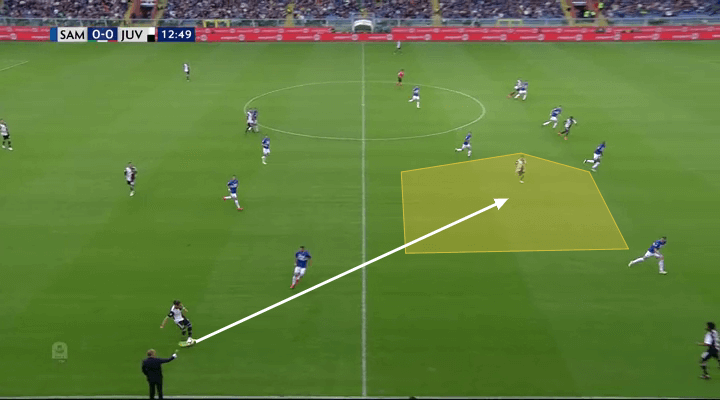
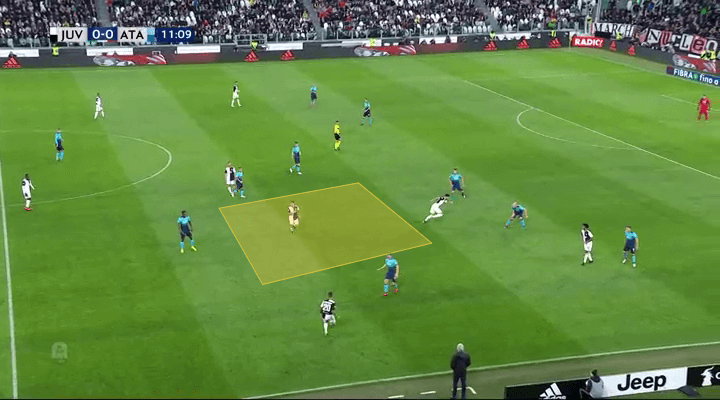
Dybala’s understanding of space is also helpful when looking to build from the back. When faced with opponent’s who pressed high, Allegri sometimes used Dybala as someone who could progress possession. He would then drop into deeper positions to create an additional option, often as a free man, and help Juventus play through the press with his superb technique, hold-up play and press-resistance.
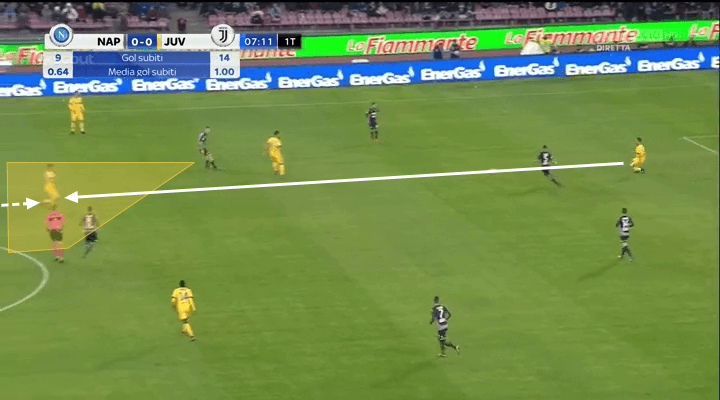
Dybala is also devastating in transition, an ability that was likely to be highly regarded by Ole Gunnar Solskjær. Dybala’s intelligence and reading of the game in all phases serves him well when transitioning from defence to attack. His passing ability is an obvious quality of his, and the ability to play inch-perfect through passes when running at pace is sure to be one of the reasons Manchester United, given their counter-attacking emphasis, were desperate to have him. The sequence below highlights all you need to know about Dybala’s quality in attacking transition.
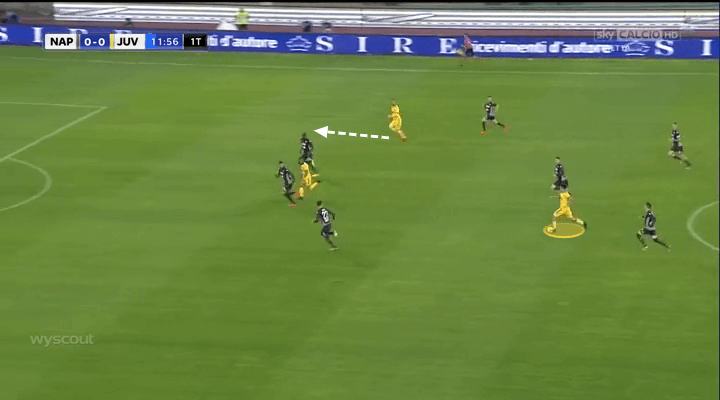
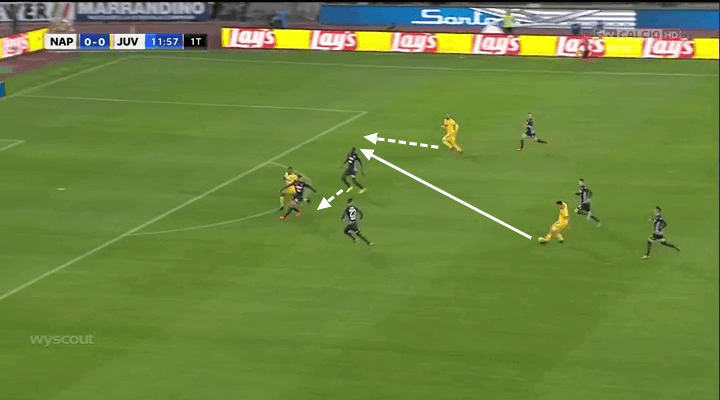
As you probably already know, Dybala is an excellent finisher as well. He remains a scorer more than a provider despite his quality in that regard, and as such his finishing is deadly. He can score from outside the box as well as within it and has excellent movement and timing in the penalty area. The two goals highlighted below exemplifies his superb finishing. The first image highlights his goal at Sassuolo in 2017. As the ball is played inside by Mandžukić, Dybala hits it first time and curls the ball away from the goalkeeper into the top corner.
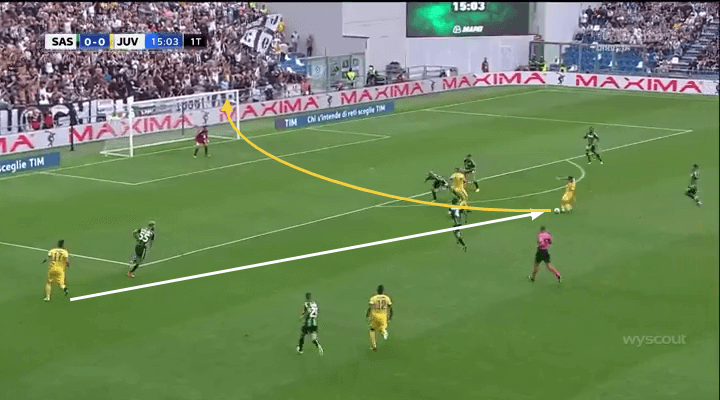
The second goal was scored at Genoa in 2017. As a left-footed player largely playing on the right half of the pitch, Dybala is devastating with the curled efforts towards the far post. However, he often tricks goalkeepers by opening up for that shot but instead drilling the ball towards the near post. The goal below is an excellent example of this as the goalkeeper is lured into taking a few steps towards the far post, leaving him unable to adjust when Dybala’s strike goes in at the near post.
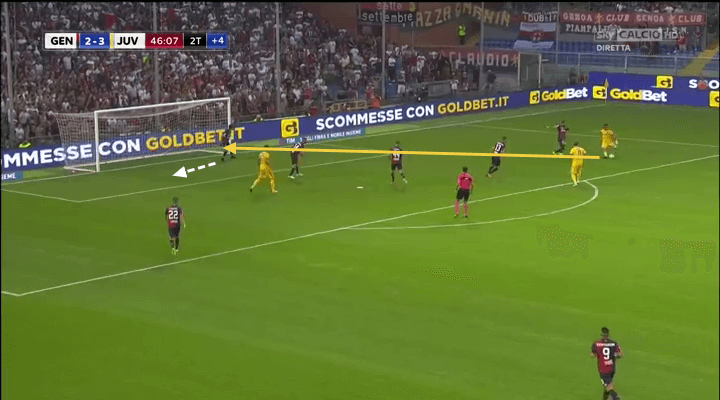
Dybala’s shooting is similar to Sergio Agüero’s in the way that he gets shot away very quickly with the sort of low backlift that makes the movement quick yet also powerful. He just needs a little gap to fire away, and when the ball leaves his boot it’s extremely difficult to stop it from going in.
So, as we’ve seen, Dybala is a complete attacker who can score, create, help progress the ball and thrives in transition. He is a fluid attacker who can pick up the ball in different areas to impact the game, but he largely thrives between the lines and in the right-sided half-space.
How would he have fit in at United?
If he had signed for Manchester United, Dybala would have instantly become their best attacker. He is a better striker than Marcus Rashford and Anthony Martial and a better number 10 than Jesse Lingard and Juan Mata. Crucially, Dybala also enjoys a great relationship with Paul Pogba with the duo bringing out the best in each other during the solitary season they spent together in Turin. Still, the main caveat here is where Dybala would have fit into the team Solskjær had moulded in pre-season. The Norwegian had exclusively used a 4-2-3-1, in which Dybala would have played as the number 10 behind either Rashford or Martial. So far so good, since it seems either combination would have suited both Dybala and the aforementioned two.
However, that would have meant Pogba partnering either Scott McTominay or Nemanja Matić in central midfield and both combinations are flawed. Pogba is at his best when moving forward to join the attack, and it would have been devastating to see him operating out of the left-sided half-space with Dybala from the right-sided half-space, but that would have left Matić exposed in midfield with the Serbian unable to cover such large distances on his own at this stage of his career. Meanwhile, McTominay’s great asset alongside his efficient passing and ability to break up play is his energy, and by forcing him to just sit and cover for Pogba and Dybala you would leave him with too much to do as well as restrict him to a role he has not yet played in. As we will see below, a change of formation might have been needed.
One area that Dybala’s arrival would have really improved is United’s ability to break through deep defences centrally. United have lacked someone who can receive the ball comfortably in tight spaces around the box and provide a central threat. Dybala offers that as well as a goal threat from these positions. His ability to turn and finish or pass in an instance is fantastic. Let’s look at two situations when he’s done just that to devastating effect.
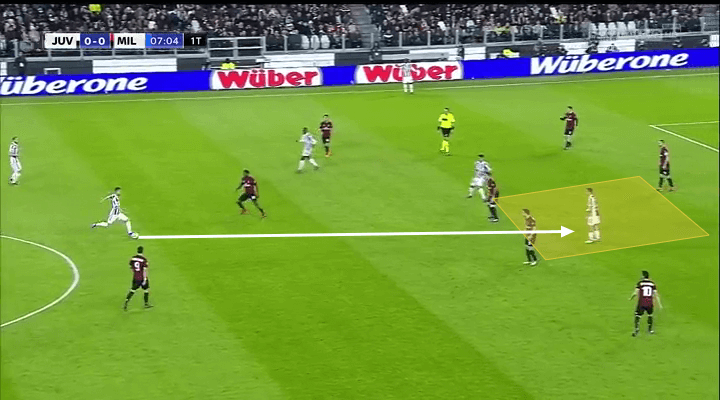
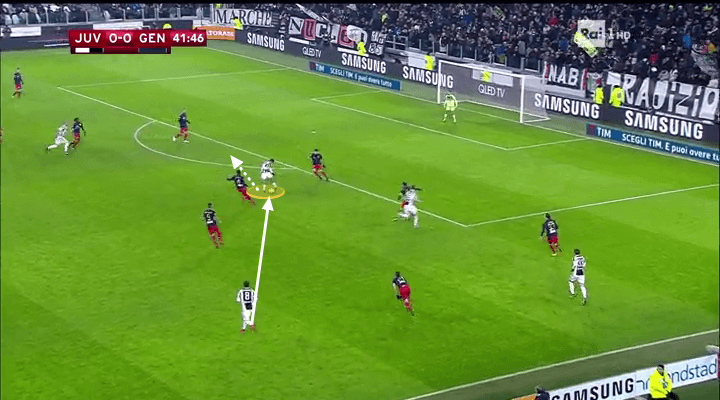
If Solskjær decided to stick with the 4-2-3-1 he had used in pre-season, Dybala would probably play as the number 10 behind Martial or Rashford with Pogba and McTominay in midfield. If the Norwegian would set that up defensively in a narrow 4-4-1-1 then it might just have worked with McTominay sacrificing his box-to-box running for a more controlled defensive midfield role. However, Solskjær used a sort of hybrid 4-3-1-2/4-3-3 on many occasions last season with the likes of Mata and Lingard operating as a 10 behind split strikers. Such a team, with a narrow front three in a 4-3-3, with Dybala would look something like below.
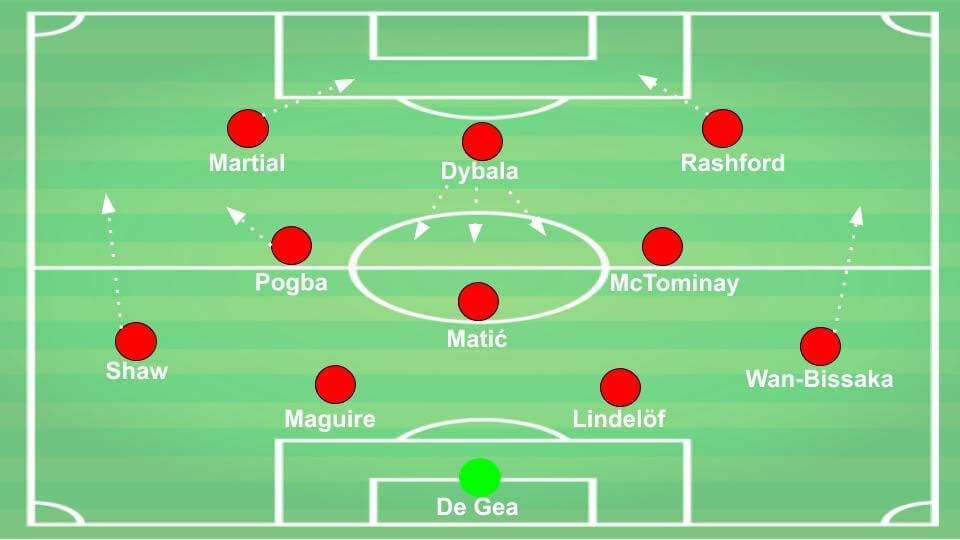
Dybala could drop off the front to create space for Martial and Rashford to attack with diagonal runs from the wide areas. Last year, United’s split strikers became too wide which led to United lacking a cutting edge and basically played without a central threat. Dybala in that role would have provided that threat while also acting as a creator for those two. Additionally, it would have freed up Pogba with two out of McTominay, Matić, Fred and Andreas Pereira providing defensive balance. The presence of four central players would also be of great help for United when looking to progress the ball, while the signing of Aaron Wan-Bissaka has given them a good option to maintain width on the right with Luke Shaw doing the same on the left.
Paulo Dybala would have improved United’s inefficiency in the final third, he would have provided a goalscoring threat, a creative dimension they currently lack, aided the likes of Rashford and Martial in attacking transition as well as helped the side progress the ball cleanly. He could have been a momentous signing who could have formed a devastating front three with Rashford and Martial.
How could Sarri use him at Juventus?
A few weeks into his reign at Juventus, Sarri said that he saw Dybala playing either as a false nine or as the right-sided striker in a 4-3-1-2. However, it seems very unlikely Dybala would be considered to be the central striker in the 4-3-3 Sarri has used in pre-season. The reason for this is that Sarri likes his centre-forward to attack the space behind the defence with deep runs, something that is not naturally Dybala’s style. Of course, a Sarri striker needs to contribute to the build-up play too, but as he showed when using Dries Mertens as the central striker at Napoli, his main preference is for the striker to attack the spaces behind the defensive line. It is a common misconception that Mertens played as a false nine at Napoli simply because of his size when, in reality, Mertens job was mainly to stretch the opponent with deep runs.
There is one role that seems plausible for Dybala to fulfil in a Sarri-led Juventus next season though. That is the role played by Lorenzo Insigne at Napoli, albeit on the other side of the pitch. This role entails creating the most famous pattern of Sarri’s final third tactics at Napoli as explained below.
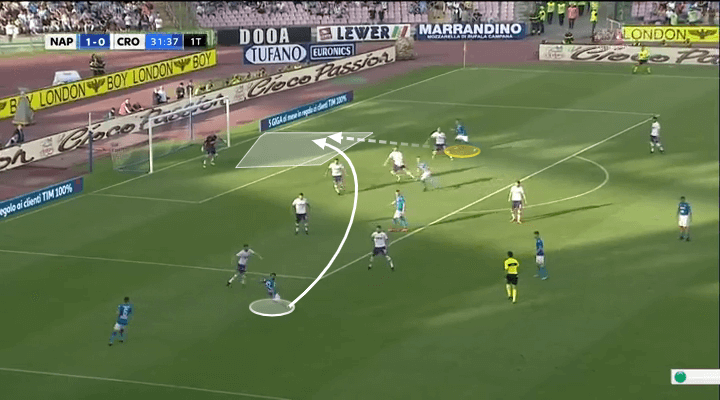
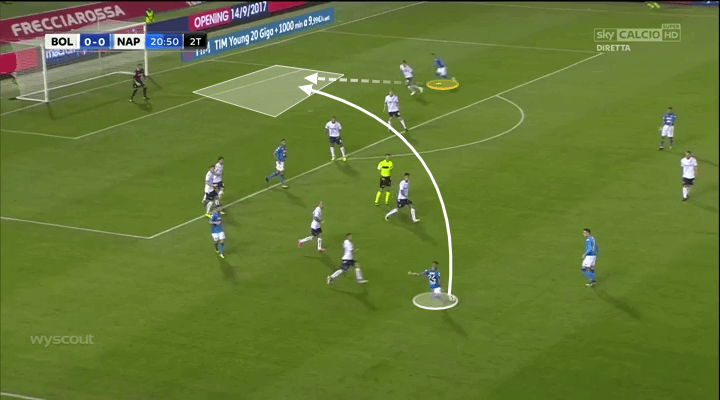
It wouldn’t be difficult to see a similar pattern recreated at Juventus this season but from the opposite flank. Federico Bernardeschi looks likely to be Sarri’s first-choice on the right wing and will cut into his left foot to send these kinds of crosses towards the back post where Cristiano Ronaldo will attack them to devastating effect. I’m a huge fan of Bernardeschi, but Dybala would give Juventus even more quality than the Italian will. Furthermore, Sarri positions his three forwards in central positions and with Dybala’s quality and sublime left foot, he could definitely be moulded into fitting the role the way Sarri would like him too. Therefore, Dybala would be a good option for that role. For his own sake though, it would mean spending another season out of position, but he would remain at Juventus which seems to be his personal preference.
Conclusion
As this analysis has shown, Paulo Dybala is an excellent forward who could have been a stunning addition to Manchester United. However, his quality warrants Juventus to give him at least a chance of training under Maurizio Sarri before sending him away. If Sarri sticks to his 4-3-3, Dybala could play the Insigne role but from the right and if Sarri changes to 4-3-1-2 as his mentioned when talking about Dybala then that opens up three positions for the 25-year-old to play in. Either way, Dybala will be an important player for whoever he plays for next season as his quality and pedigree show he can influence any game at the highest level.
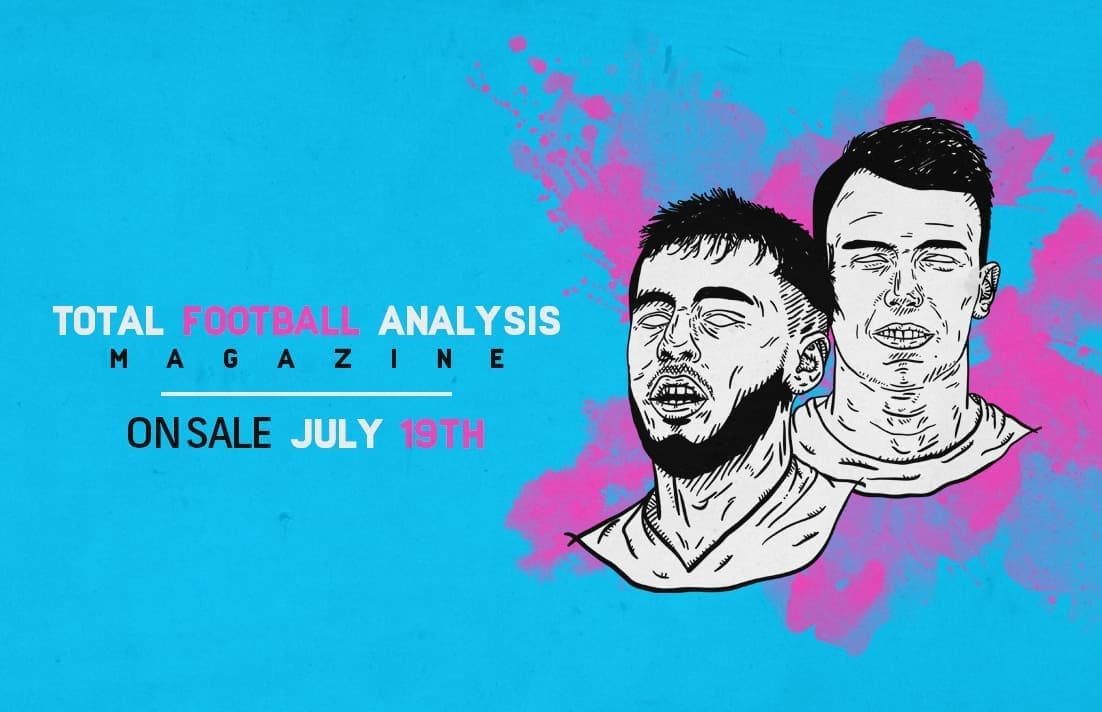
If you love tactical analysis, then you’ll love the digital magazines from totalfootballanalysis.com – a guaranteed 100+ pages of pure tactical analysis covering topics from the Premier League, Serie A, La Liga, Bundesliga and many, many more. Buy your copy of the July issue for just ₤4.99 here, or even better sign up for a ₤50 annual membership (12 monthly issues plus the annual review) right here.

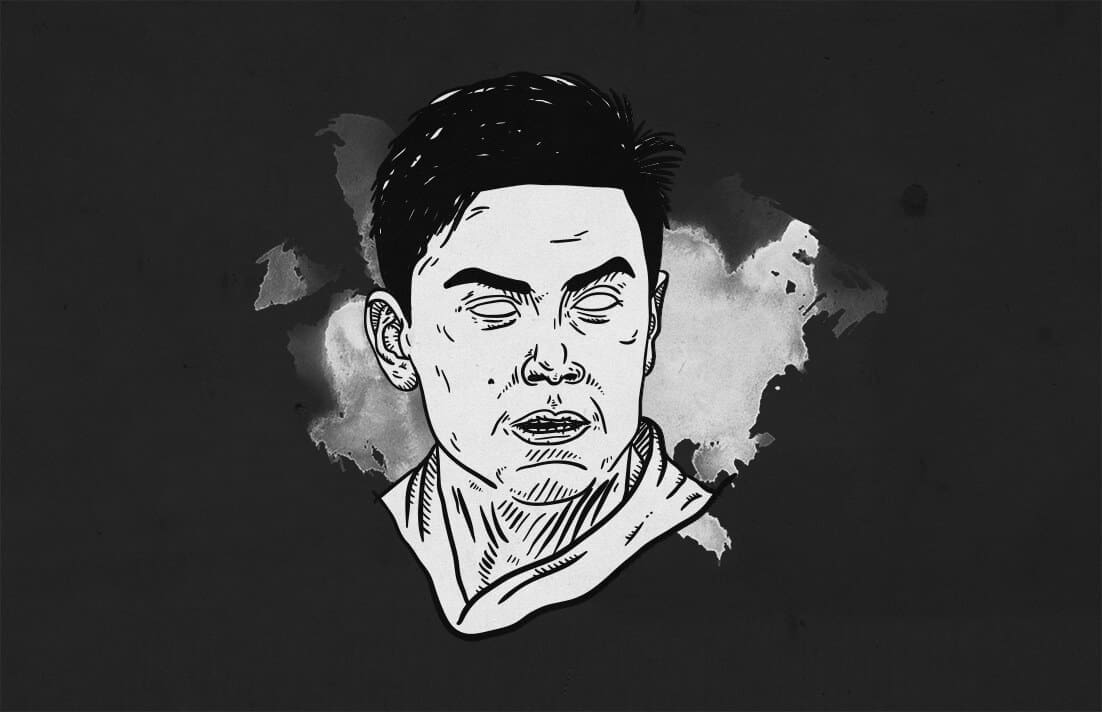



Comments